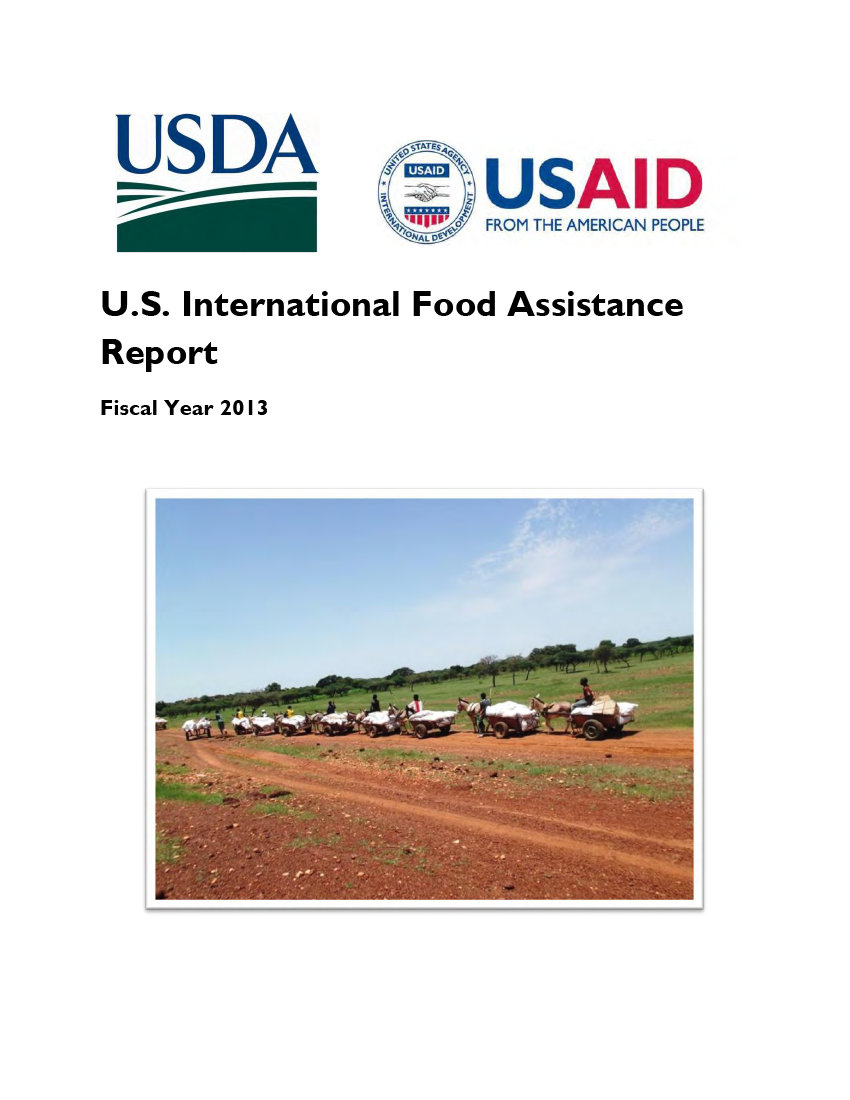Speeches Shim
The annual U.S. International Food Assistance Report is required by Section 407 of the Food for Peace Act, as amended by Section 3018 of the 2008 Farm Bill. This report on U.S. government food assistance is written and submitted to the U.S. Congress by USAID, in conjunction with the U.S. Department of Agriculture.
In fiscal year (FY) 2013, the U.S. Government provided $1.7 billion of food aid, or 1.4 million metric tons of food, to a total of more than 46.2 million beneficiaries in 56 countries. Food assistance is a major component of the President’s global hunger and food security initiative, Feed the Future. U.S. food assistance programs provide responses to emergency and non-emergency food needs. The food assistance programs discussed in this report include the following:
- The Title II Food for Peace program responds to emergency needs such as disasters and crises, and targets the underlying causes of hunger and malnutrition through development food assistance programs.
- The Food for Progress program responds to non-emergency food aid situations by supporting agricultural value chain development, expanding revenue and production capacity, and increasing incomes in food-insecure countries.
- The McGovern-Dole International Food for Education and Child Nutrition program responds to non-emergency food aid needs by supporting education and nutrition for school children, particularly girls, expectant mothers and infants.
Countries in Africa and South and Central Asia together total more than 90 percent of the aid provided through U.S. government food aid programs. African countries received 79 percent of all tonnage provided under food aid programs. More than 30 awardees implemented U.S. government food assistance programs in FY 2013.


Comment
Make a general inquiry or suggest an improvement.